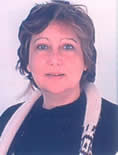|
TESOL EVONLINE 2005
ESL2ESP session - Jan 17-Feb 26 |
|
|
Week 4- February 7 - 13
|
|
|
Creating
ESP Curriculum/ Activities
|
|
|
Course Design, Activities, and Assessment
|
|
|
General Comments and Questions by Week
4 guest moderator, Dafne Gonzalez
|
|
 |
Dear all, Thanks Christine and Buth for your invitation! It is my pleasure to be here with you, as one of the guest-moderators for week 4, honored to shared this task with Adam Turner. I apologize for not having participated in the discussion, I have been a lurker, skimming through the messages and trying to follow the enlightening discussion, while co-moderating another session "Becoming a Webhead" which has taken most of my free time; but I promise I will be around this week sharing and learning from and with you all :-) |
|
During this week we will be talking about ESP course design, activities and, of course, this includes assessment. But before getting down to business, let me briefly tell you how I became an ESP teacher. Since I graduated in Modern Languages, I had been teaching EST (English for Science and Technology) at different universities, mainly through reading, and I also taught EFL from k-12. In the meantime, I completed a MA in Educational Technology and a MA in Applied Linguistics. Then, in 1997, a colleague and I were asked to teach English for Architecture, a 4-skill program taught at my university. To tell you the truth, I was scared to death, because I did not know anything about architecture not even in my native language. But I decided to take the challenge, and said YES!! The good news came from the professors who had taught those courses before: "You will never have the same students two classes in a row", "They hardly ever come to class", "They are late" always ending their remarks with "…but they are very nice kids and very creative" Well, as you see, not a very encouraging image for us, newbies
in the field. After a couple of years we can say that our English
for Architecture program has been very successful. How? Well, to
learn The tiny url to the document is: http://tinyurl.com/5mvsv But the program did not stop there, in 2002, I decided to incorporate
online components to our program; and nowadays, all our English
for Architecture courses are blended. After reading the My idea is that you read the chapter, check out the site, and come up with comments and questions which I will be happy to answer. Anxiously looking forward to your comments, Dafne |